
Science News
Month in Space: June 2009
See moonshadows on Saturn's rings, volcanoes on Earth and Mars and other out-of-this-world imagery from June 2009.
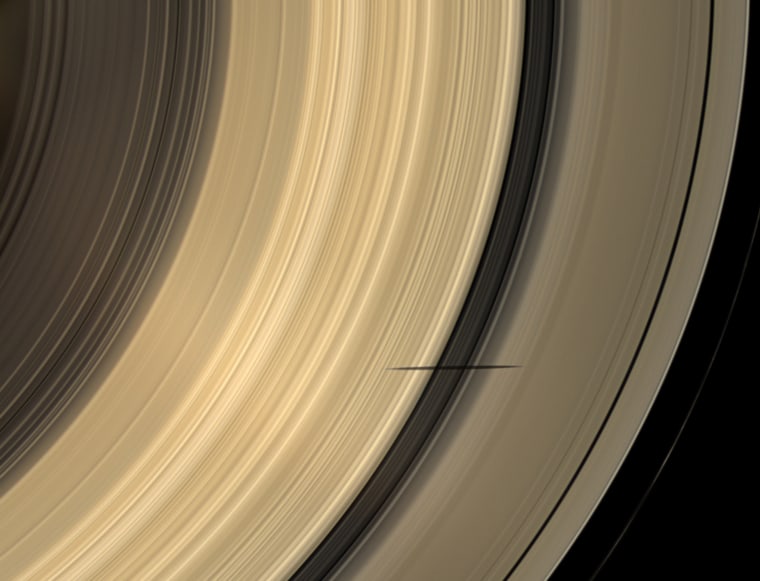
Moonshadow on Saturn's rings
The spiky black shadow of Saturn's moon Mimas dips onto the planet's rings and straddles the Cassini Division in this natural color image, taken by the Cassini orbiter as Saturn approaches its August equinox. Shadows on Saturn's rings are extremely elongated at this time in Saturn's 29.5-year orbit because the rings are facing the sun nearly edge-on. The picture was taken on April 8 and released on June 22.
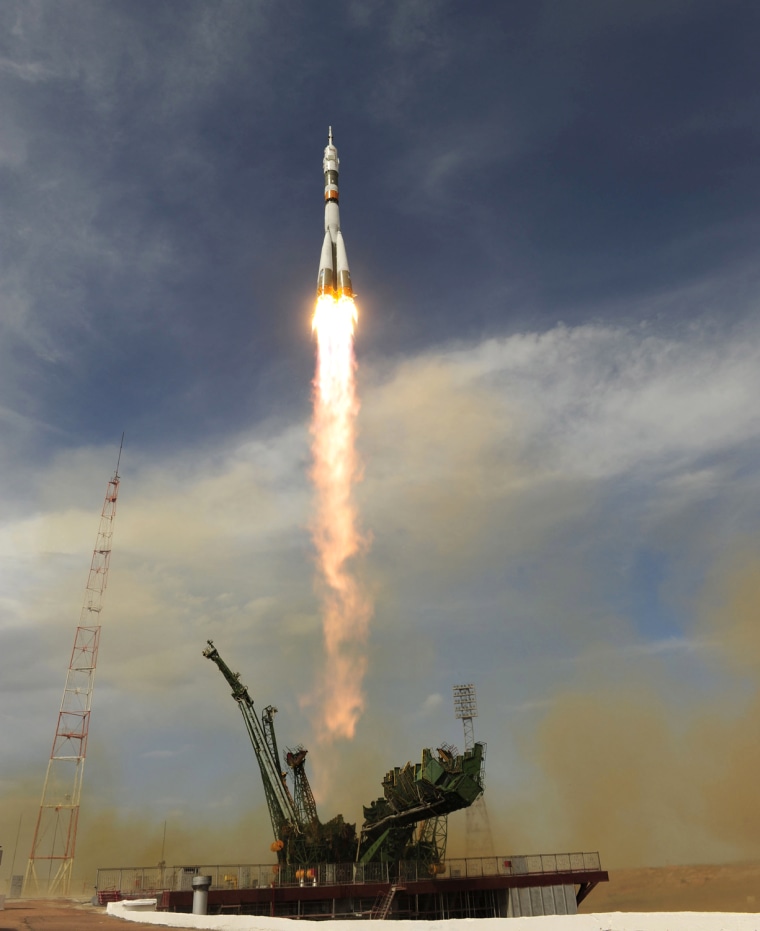
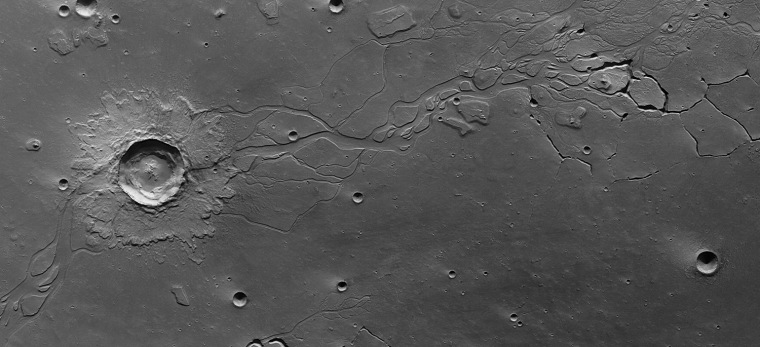
Channels on Mars
This image of Hephaestus Fossae, acquired in December 2007 and released on June 5, comes from the European Space Agency's Mars Express orbiter. Named after the Greek god of fire, Hephaestus Fossae extends for more than 375 miles on the western flank of the Martian mountain Elysium Mons. The region's channel system may have been created when a giant impact penetrated the surface enough to melt a reservoir of frozen water, creating runoff.
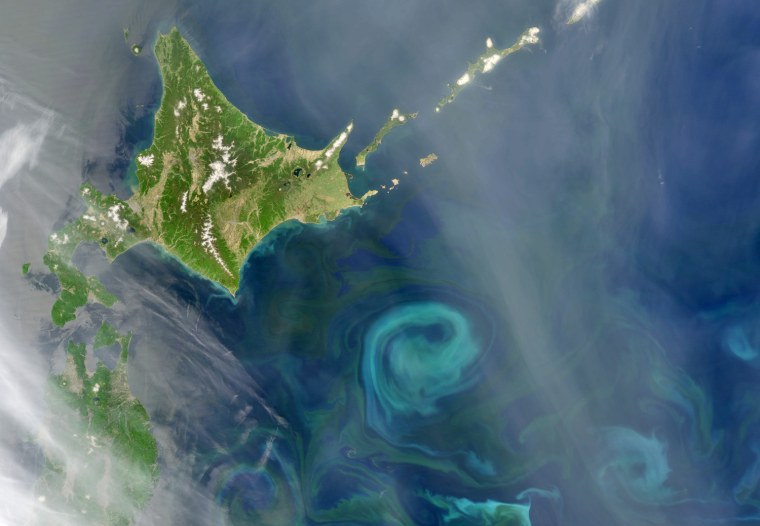
Marine green
In the northwest Pacific Ocean, the Oyashio Current flows down out of the Arctic, past Siberia and the Kamchatka Peninsula. Around the latitude of Japan's Hokkaido Island, it begins to veer eastward and converges with the warmer Kuroshio Current. This image from NASA's Aqua satellite, captured May 21, shows how the convergence of these two currents affects blue-green swirls of phytoplankton floating in the sea.
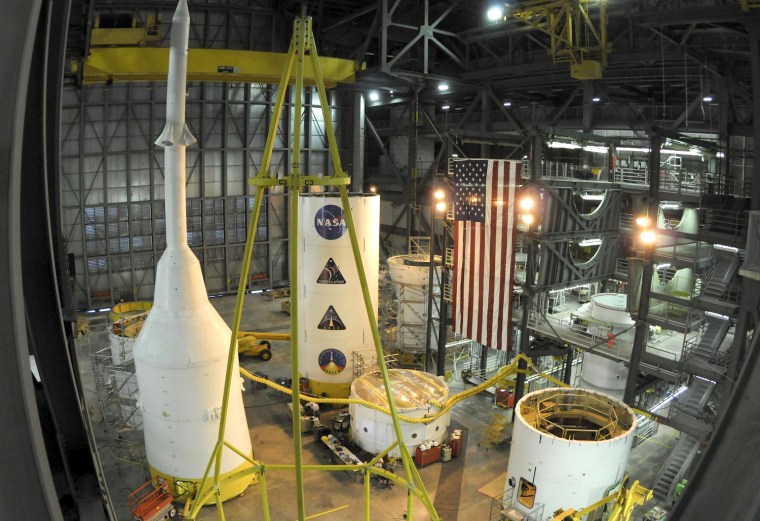
Stacking up
Components for the Ares I-X flight test rocket are prepared for stacking in NASA's Vehicle Assembly Building at Kennedy Space Center in Florida on June 18. Rocket pieces that were once at various manufacturing sites spread across the country will be assembled for a test launch later this year.
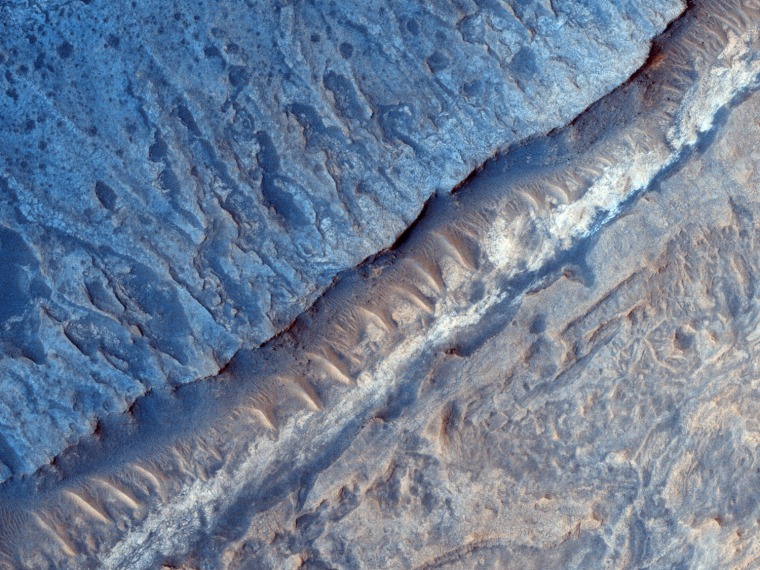
Mars revealed
A false-color image from the high-resolution camera on NASA's Mars Reconnaissance Orbiter reveals variations in the composition of clay and sulfate-bearing rocks in Gale Crater on the Red Planet. Gale Crater is one of the potential landing sites being considered for NASA's Curiosity rover, which is due for launch in 2011. This picture, released June 17, is based on data acquired in March.
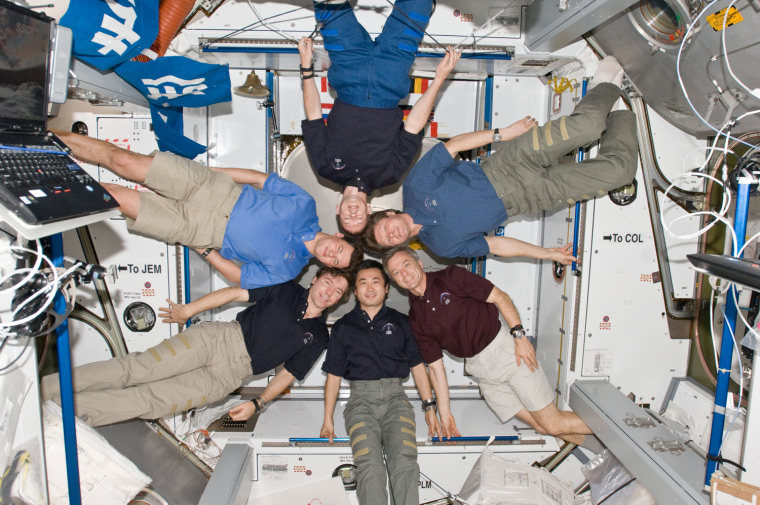
Putting their heads together
The six-person Expedition 20 crew poses in "starburst" formation for an in-flight portrait in the Harmony node of the international space station on June 14. Pictured clockwise, from right center, are Russian commander Gennady Padalka, Canada's Robert Thirsk, Japan's Koichi Wakata, NASA's Michael Barratt, Russia's Roman Romanenko and the European Space Agency's Frank De Winne.
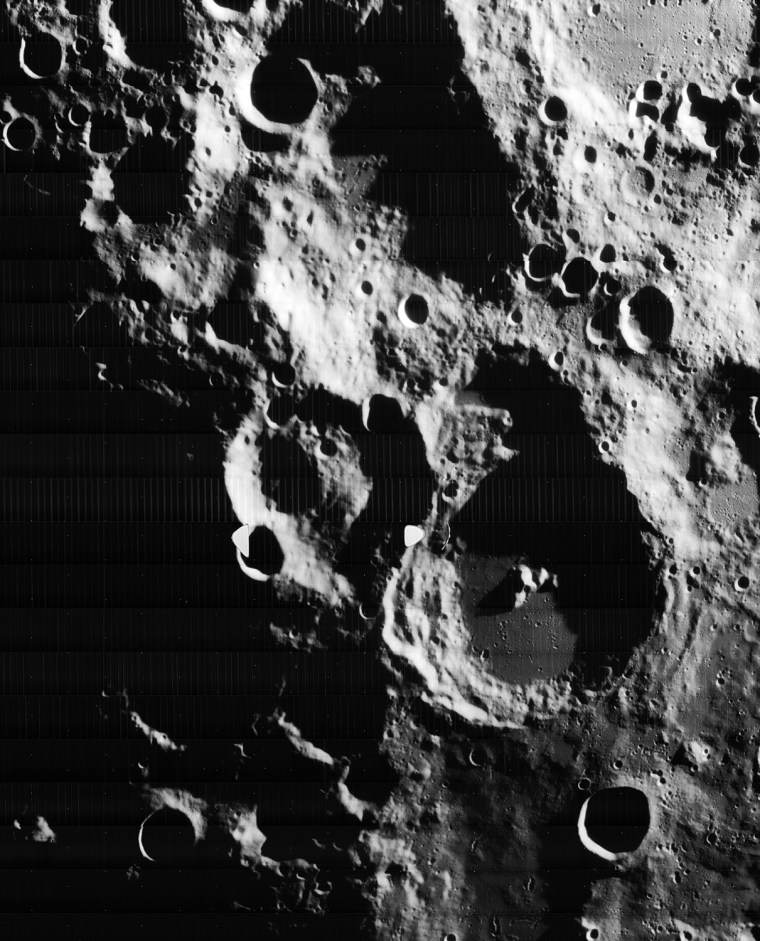
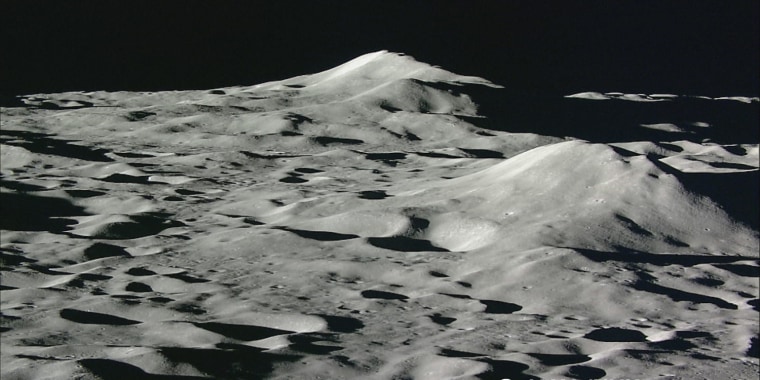
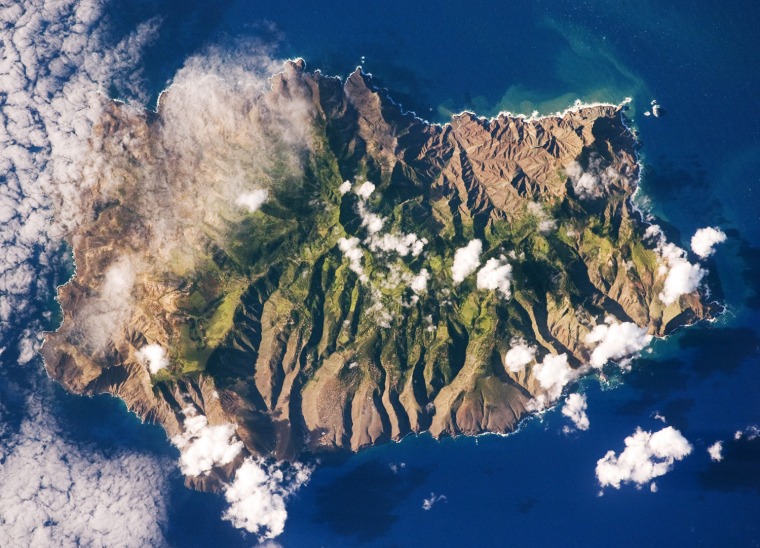
Evolving island
St. Helena, located in the South Atlantic Ocean, was one of the many isolated islands that naturalist Charles Darwin visited during his scientific voyages in the nineteenth century. This image of St. Helena was acquired by astronauts onboard the international space station in May and released on June 15 as part of the HMS Beagle Project, an effort to document current biodiversity in the areas Darwin visited. Before Darwin's day, St. Helena was where an exiled Napoleon Bonaparte spent the last years of his life.
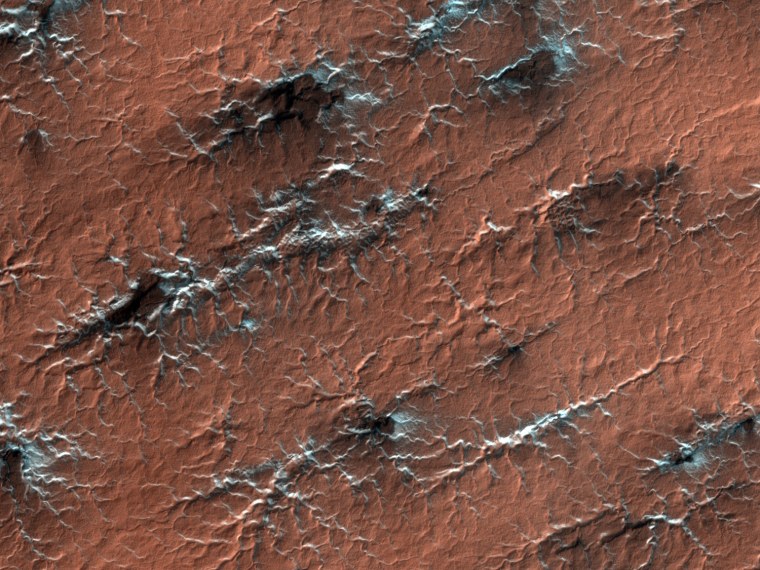
How Martian spiders evolve
Formations shaped like spider webs stretch over Martian terrain in this high-resolution image from NASA's Mars Reconnaissance Orbiter, released on May 27. Scientists don't fully understand the origins of the formations, but the "spiders" emerge when carbon dioxide ice dissipates on Mars, revealing the soil below.
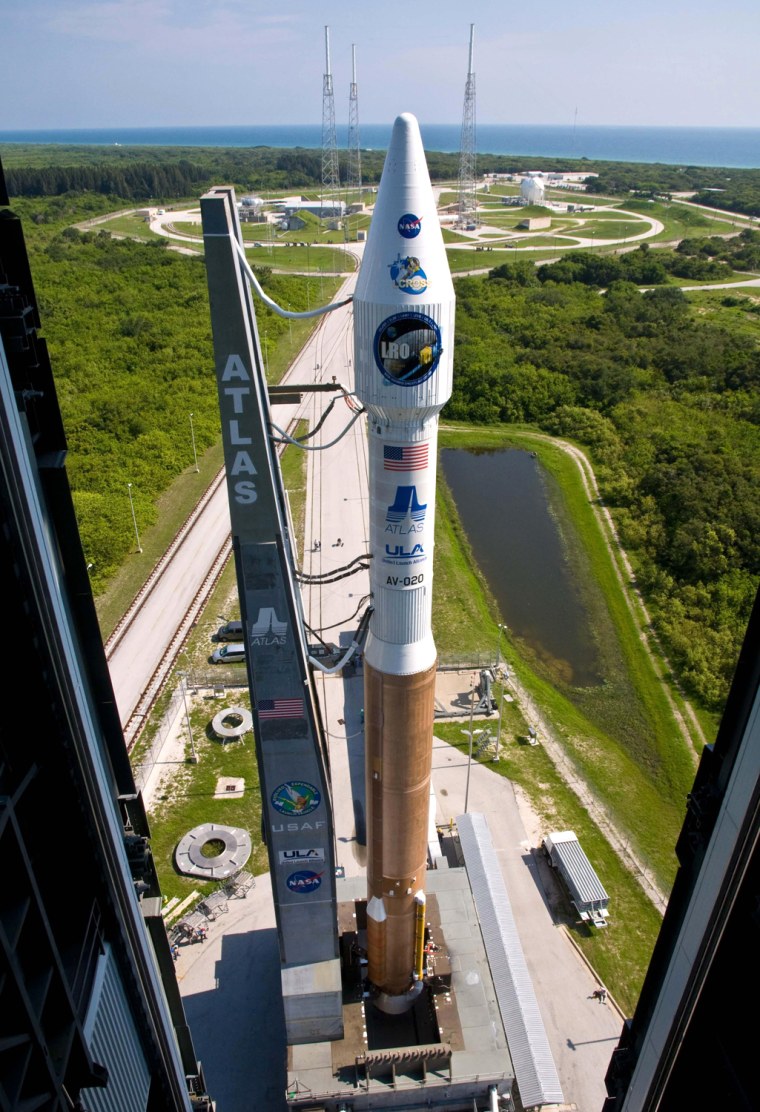
To the moon!
NASA's first lunar probes in a decade - the Lunar Reconnaissance Orbiter and the Lunar Crater Observation and Sensing Satellite, or LCROSS - sit atop an Atlas 5 rocket during the rollout to the launch pad in preparation for liftoff on June 18. The spacecraft will scout potential water sources and landing sites in anticipation of human missions to the moon.
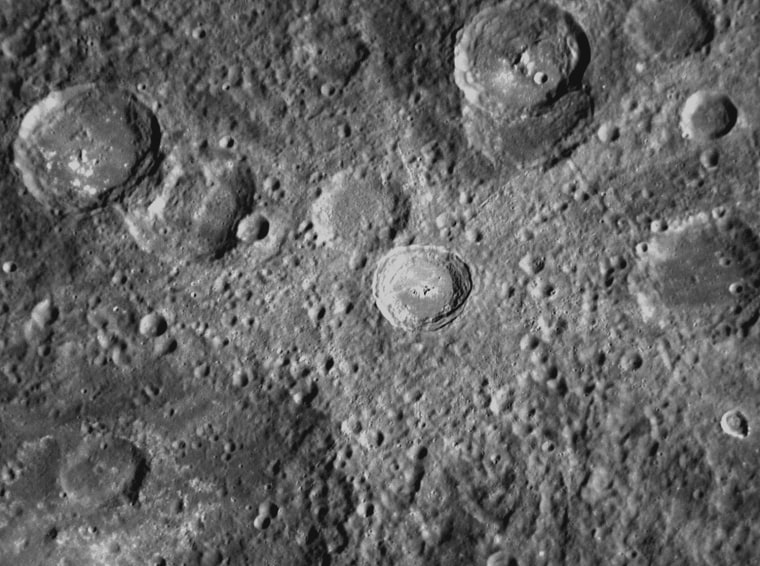
Mercury's rays
This image from NASA's Messenger spacecraft shows a crater on the planet Mercury with a set of light-colored rays radiating outward. Such rays are formed when an impact excavates material from below the surface and throws it out from the crater. Messenger acquired the data for the picture during a flyby in October 2008, and the resulting picture was released June 9.
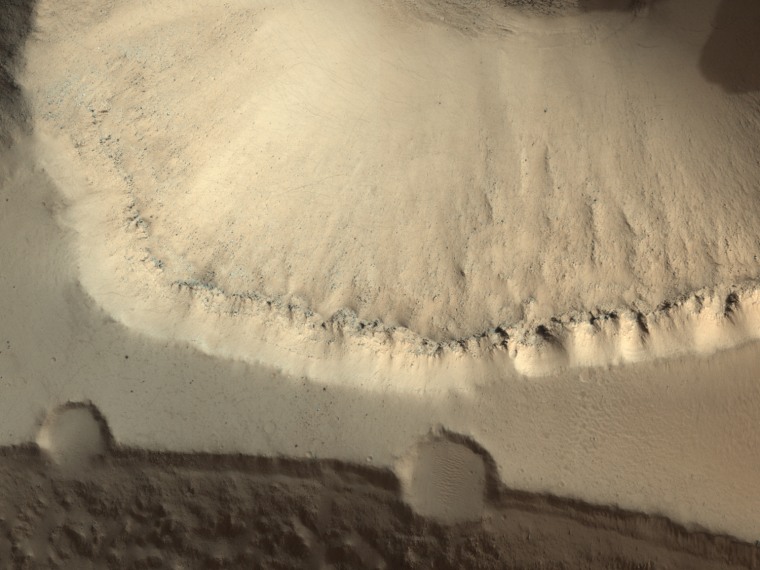
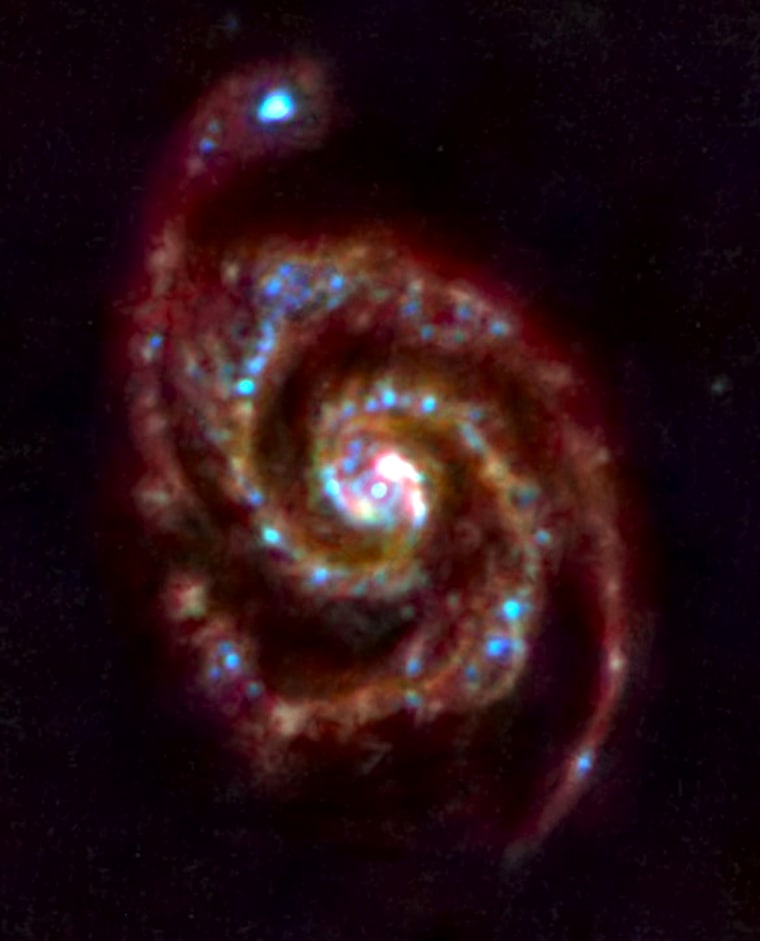
First look
This infrared view of M51, the Whirlpool Galaxy, represents the first test observation by the European Space Agency's recently launched Herschel spacecraft. The image, released June 19, combines three infrared wavelengths to produce a view of the galaxy's stars and clouds of dust and gas.
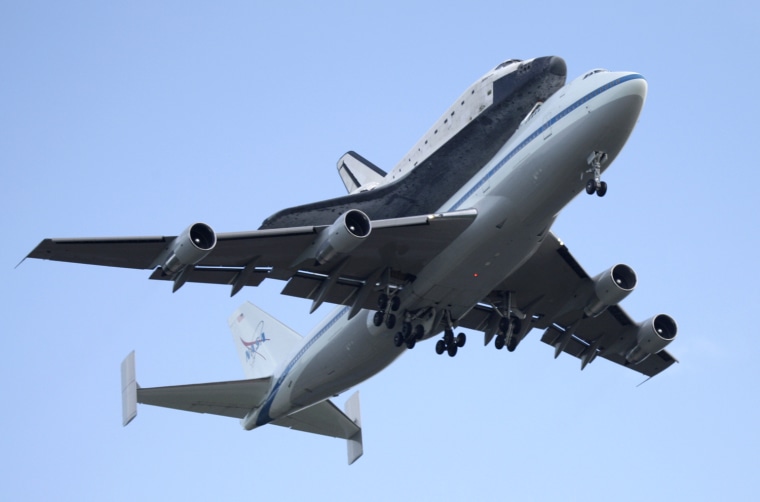
Take me home
The space shuttle Atlantis takes a piggyback ride back home to NASA's Kennedy Space Center in Florida on June 2, on top of a modified Boeing 747 jet. The $1.8 million cross-country trip was required because Atlantis landed in California at the end of its flight to fix the Hubble Space Telescope.